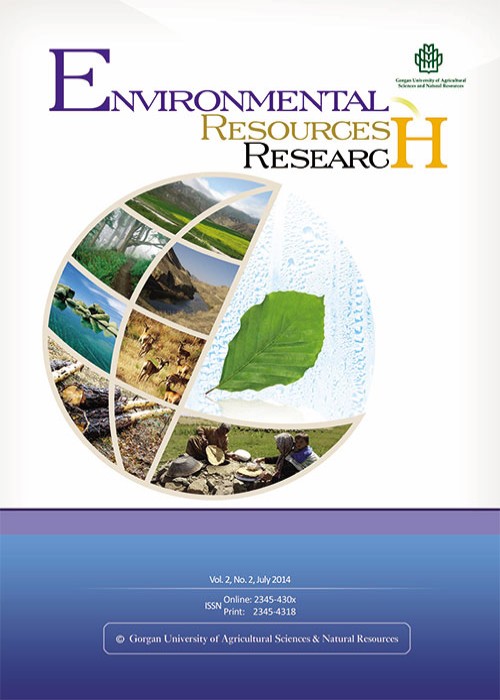Dynamics and Structural Characteristics of a Natural Unlogged Oriental Beech (Fagus orientalis Lipsky) Stand during a 5-year Period in Shast Kalate Forest, Northern Iran
Author(s):
M. Amiri , R. Rahmani , Kh. Sagheb , Talebi , H. Habashi
Abstract:
Investigation on structure and dynamics of natural forest ecosystems is an important issue for silvicultural decisions. The aim of this study was to analyse the dynamics and structure of a beech stand during a 5-year period in the Shast Kalateh forest in eastern Caspian region, North of Iran. Data were collected from a 16.9ha permanent research plot established in a natural unlogged stand from the year 2006 to 2011. All living trees with a diameter at breast height ≥7.5 cm were measured. The permanent research plot was dominated by six species (beech, hornbeam, ironwood, velvet maple, Caucasian alder and date plum). The analysis of results showed that the total living stand density and volume fluctuated between 302 and 287 trees per ha and 504 to 472 m3ha-1 over the 5-year period, respectively. Results also showed that the total density of deadwood increased from 21 to 27.7 Nha-1 over the 5 years. During the study, the volume of dead trees was 15.3 m3ha-1, equal to 3% mortality in the volume of living trees in the year 2006. Live trees of beech, hornbeam and ironwood illustrated reverse J distribution, both for 2006 and 2011. The maximum proportion of stem number was found in the small diameter class (≤30 cm), whereas the maximum volume of trees was found in the largest diameter class (>75 cm). Another remarkable change was related to the amount of total volume in the diameter class (35-50 cm), which was 37.4 and 40.3 m3ha-1 in 2006 and 2011, respectively. The proportion of stem number in diameter classes of 35-50 and >75 cm increased from 2006 to 2011, while the stem number of ≤ 30 cm and 55-70 cm diameter classes decreased with values of -8.18 and -2.72 regarding the year 2006. Also, the highest volume was calculated in the diameter class >75 cm in the years 2006 and 2011 (248.3 and 254.3 m3ha-1), respectively. The results showed that the highest mortality happened among young trees with diameter ≤ 30 cm. It can be concluded that Shast Kalateh forest as a part of beech forests is passing through a degradation phase, due to the significant number and volume of dead trees.
Keywords:
Language:
English
Published:
Journal of Environmental Resources Research, Volume:1 Issue: 2, Winter - Spring 2013
Page:
107
magiran.com/p1208841
دانلود و مطالعه متن این مقاله با یکی از روشهای زیر امکان پذیر است:
اشتراک شخصی
با عضویت و پرداخت آنلاین حق اشتراک یکساله به مبلغ 1,390,000ريال میتوانید 70 عنوان مطلب دانلود کنید!
اشتراک سازمانی
به کتابخانه دانشگاه یا محل کار خود پیشنهاد کنید تا اشتراک سازمانی این پایگاه را برای دسترسی نامحدود همه کاربران به متن مطالب تهیه نمایند!
توجه!
- حق عضویت دریافتی صرف حمایت از نشریات عضو و نگهداری، تکمیل و توسعه مگیران میشود.
- پرداخت حق اشتراک و دانلود مقالات اجازه بازنشر آن در سایر رسانههای چاپی و دیجیتال را به کاربر نمیدهد.
دسترسی سراسری کاربران دانشگاه پیام نور!
اعضای هیئت علمی و دانشجویان دانشگاه پیام نور در سراسر کشور، در صورت ثبت نام با ایمیل دانشگاهی، تا پایان فروردین ماه 1403 به مقالات سایت دسترسی خواهند داشت!
In order to view content subscription is required
Personal subscription
Subscribe magiran.com for 70 € euros via PayPal and download 70 articles during a year.
Organization subscription
Please contact us to subscribe your university or library for unlimited access!



